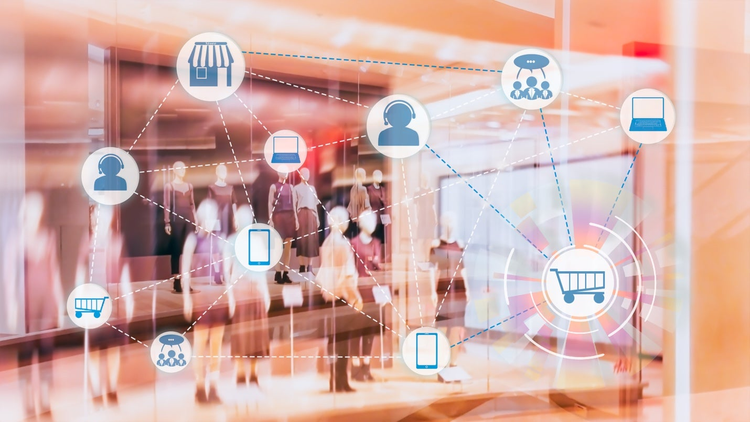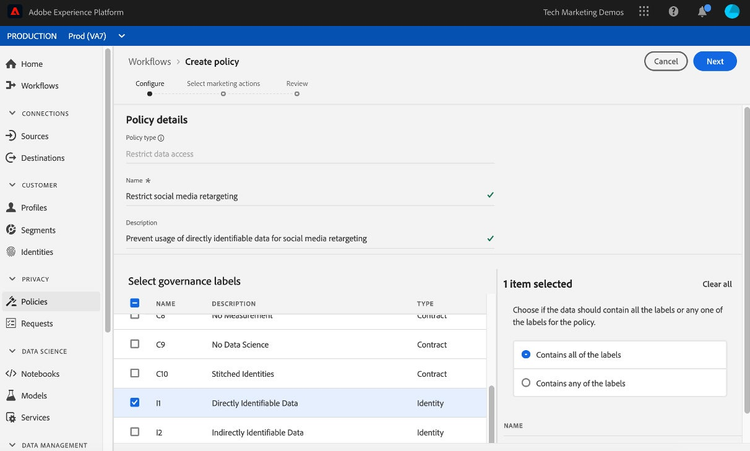Announcing data governance capabilities for Real-Time Customer Data Platform

As an enterprise, if there’s one lesson to be gleaned from the impact of COVID-19, it’s that digital transformation is absolutely critical to future-proofing an organization and making it resilient to change.
For example, the latest Digital Economy Index from Adobe finds that U.S. consumers spent more than $66.3 billion online in July, which represents a 55 percent growth year-over-year. With the accelerated growth in online commerce over the past few months, we can expect to see Herculean efforts from brands in the short term to quickly progress their digital strategies.
For many companies, the move towards digital while also focusing on delivering a compelling, differentiated experience to customers has put unprecedented strain on the business. They’re now having to collect and smartly manage a deluge of customer data to provide a more personalized customer experience across channels and devices. However, this data is often subject to regulations, contractual restrictions and internal policies that limit how it can be used.
As an organization, the value that can be derived from your data is controlled by your ability to know what data you have and where it came from, to catalog and categorize it, and to manage the myriad of regulatory, contractual and policy limitations on its use. Ultimately, for anyone within the company to use customer data effectively and in an agile way, you need an analytics infrastructure that is well connected to the tools the enterprise uses to deliver personalized, multichannel experiences to customers.
Today, we’re excited to announce the general availability of Data Governance capabilities in Real-time Customer Data Platform (CDP). This is the first-of-its-kind framework that has been developed to empower brands to manage their customer experience data across the enterprise, from the point that it has been collected to when it is being syndicated to use cases outside of the platform. While handling data lineage and defining usage policies have historically sat with IT, the Data Governance capabilities of Real-time CDP offer extensibility and flexibility for anyone within the enterprise – including data stewards, marketers, engineers and data scientists – to easily understand and act upon the company’s data strategies and policies.
The Data Governance capabilities of Real-time CDP can easily be accessed via the Privacy Console, which serves as a one stop shop to manage, inform and enforce data usage policies. Key features include:
- Apply Appropriate Data Usage Labels: Data Governance allows you to apply usage labels to data to stay compliant with data usage policies. Adobe offers out-of-the-box labels that can be used to classify data with privacy-related considerations and contractual conditions such as contract labels, identity labels and sensitive labels. In addition, brands can also apply their own custom labels to fit their data governing needs.
- Configure Marketing Usage for Labeled Data: Once the data has been labeled, you can set data usage restrictions by defining marketing use cases for the data. This allows you to ensure that any profiles or segments that have been selected for a marketing use case are compliant with your data usage policies.

(Marketers can create their own data usage policies like preventing usage of directly identifiable data for social media retargeting and apply those policies to governance labels within the user interface)
- Manage Data Policies: Data usage policies support data compliance with appropriately labeled data. Data usage policies are rules that describe the types of marketing actions that marketers are allowed to take - or are restricted from performing - on data within Real-time CDP. For example, given the dataset and the restrictions applied to it by the data policies, a marketer can determine whether they can use the data for email or social media campaigns.
- Enforcement of Data Compliance: Once data is labeled and usage policies are defined, you can enforce data usage compliance . When activating audience segments to destinations for marketing use cases, our Data Governance capabilities automatically enforce usage policies should any violations occur, preventing users from violating any of the policies they’ve set. When a policy violation does occur from attempting to activate a marketing effort, a popover will appear indicating that policies have been violated. This proactive enforcement step prevents customer data from being unintentionally misused.

(A popover alerts user of any policy violations, reason for the violations, and provides data lineage details such as the dataset used, segment affected, and marketing use case impacted)
For more information, refer to this video to learn more about how the Data Governance capabilities in Real-time CDP can help brands deliver personalized experiences while providing complete control over customer data. In addition, check out this presentation from Adobe Summit 2020 to learn about how companies like 3M are ensuring that privacy and diligent data usage enforcement are part of their brand story by leveraging the Data Governance capabilities of Real-time CDP.